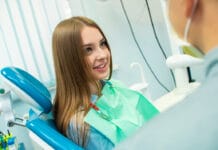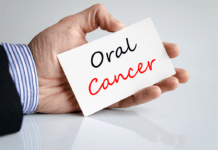An estimated 9% of the U.S. population will have an eating disorder in their lifetime. With around 10,200 deaths per year being a direct result of an eating disorder, a better understanding of eating disorders among dental professionals is crucial.1 A recent study published in the Journal of Eating Disorders investigated the oral health and changes in saliva’s anti-inflammatory and analgesic components of adolescents with anorexia nervosa.2
Anorexia nervosa causes individuals to obsess about their weight and leads to reduced eating, which can affect saliva composition and oral functions. Chewing has been shown to reduce stress, possibly mediated by saliva’s properties. Opiorphin, found in body fluids like saliva, has strong pain-relieving properties and is compared to morphine but with fewer side effects.2
Immunoglobulins (IgA, IgG, IgM) in saliva help protect against infections. Stress can lower the levels of immunoglobulins while increasing the release of stress hormones such as cortisol. Patients with anorexia nervosa may have altered immune systems due to stress-related hormonal changes.2
The Study
This study aimed to compare salivary opiorphin, IgA, IgG, and IgM levels among adolescents with anorexia nervosa and healthy controls, considering factors like oral hygiene, disease duration, weight, BMI, and ideal body weight (IBW). This case-controlled study had 162 participants, 83 of whom were in the study group, and the remaining 79 were placed in the control group.2
The anorexia nervosa group consisted of female adolescents with anorexia nervosa diagnosed by a psychiatrist. The clinical examination and saliva collection were conducted during the severe phase of symptoms. Bulimic and other somatic disorders were excluded. The control group comprised healthy teenagers matched for age and sex.2
Qualified dentists performed saliva collections, and saliva was collected after a specific period of fasting. Opiorphin and immunoglobulin (IgA, IgG, IgM) levels were measured. Statistical analyses were conducted to compare the two groups and identify relationships between variables.2
The Results
The study found significant differences between adolescents with anorexia nervosa and healthy controls. The anorexia nervosa group had a higher percentage of sites with biofilm deposits than controls (42.6% vs. 10.5%). Salivary opiorphin levels were significantly higher in the anorexia nervosa group. IgM levels were significantly lower in the anorexia nervosa group compared to controls, while there were no significant differences in IgA and IgG levels.2
Opiorphin is associated with pain, stress, and eating behaviors, all relevant to anorexia nervosa. Previous research supports the activation of the stress hypothalamic-pituitary-adrenal (HPA) axis in patients with anorexia nervosa, and opiorphin levels could be linked to stress exposure. The study noted variability in opiorphin levels, possibly due to factors like hyposalivation in patients who are malnourished.2
The reduction in IgM levels in the anorexia nervosa group may be tied to immune system dysfunction, which is observed in anorexia nervosa. Immunoglobulins could play a role in appetite regulation and eating disorders. The study suggests that exploring the relationships between these biomarkers and other factors could provide further insights.2
The study also highlighted poor dental hygiene in the anorexia nervosa group, with high levels of dental biofilm, potentially influenced by factors like stress, depression, and apathy. The limitations of the study included its relatively small sample size and lack of data on previous oral hygiene levels.2
Conclusion
The study observed differences in salivary biomarkers related to immunity and stress between adolescents with anorexia nervosa and healthy controls. Patients with anorexia nervosa had poor oral hygiene, and their oral hygiene status correlated with salivary biomarkers. The results suggest that salivary opiorphin, along with immunoglobulins, seem to be associated with dental biofilm accumulation in adolescents with severe anorexia nervosa. The study highlights that opiorphin production might reflect immune conditions and inflammation. Further exploration of this relationship, especially in patients with anorexia nervosa with severe malnutrition, is warranted.2
The study provides insights into the relationship between salivary biomarkers, oral health, and anorexia nervosa in adolescents. It underscores the potential roles of opiorphin and immunoglobulins in the context of stress, immune dysfunction, and eating behaviors associated with anorexia nervosa.2
The onset of anorexia nervosa is often in childhood, which is a crucial period to maintain “oral homeostasis notably of deciduous and permanent teeth, periodontal tissues, oral mucosa, and oral fluids.”2 As dental professionals, a better understanding of eating disorders can help when addressing oral manifestations in patients. Patients with anorexia nervosa may present with poor oral hygiene, increased biofilm, and inflammation. If the patient has not already received help for their condition, a referral to a licensed nutritionist as well as a primary care physician may be beneficial for the patient’s overall health as well as their oral health.
Before you leave, check out the Today’s RDH self-study CE courses. All courses are peer-reviewed and non-sponsored to focus solely on high-quality education. Click here now.
Listen to the Today’s RDH Dental Hygiene Podcast Below:
References
- Eating Disorder Statistics. (n.d.). National Association of Anorexia Nervosa and Associated Disorders. https://anad.org/eating-disorders-statistics/
- Paszynska, E., Hernik, A., Slopien, A., et al. Expression of Salivary Immunoglobulins and their Association with Analgesic Neuropeptide Opiorphin in Anorexia Nervosa during Adolescence. Journal of Eating Disorders. 2022; 10(1): 118. https://doi.org/10.1186/s40337-022-00637-3











